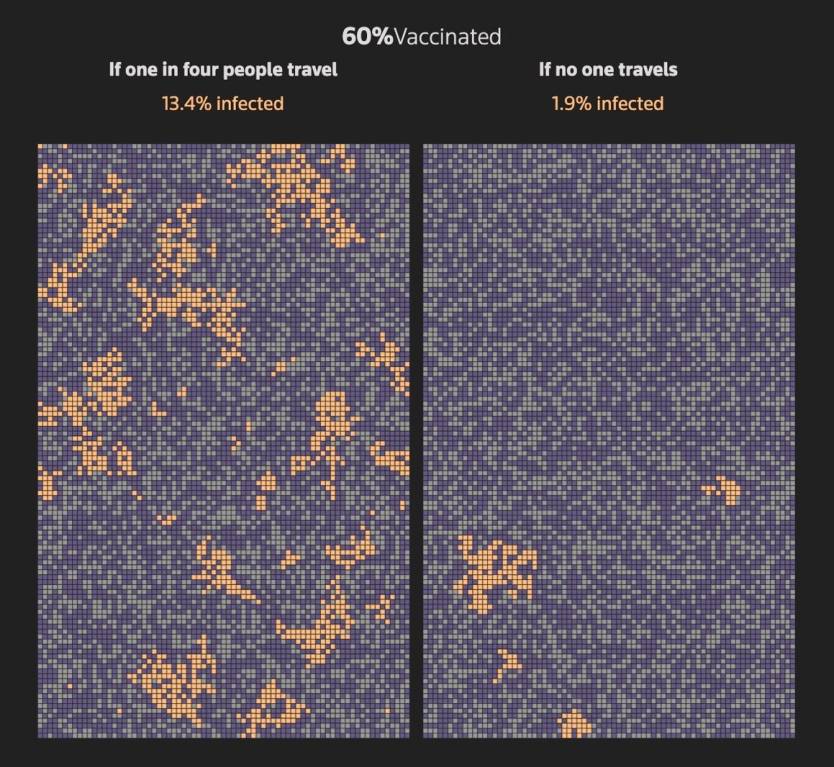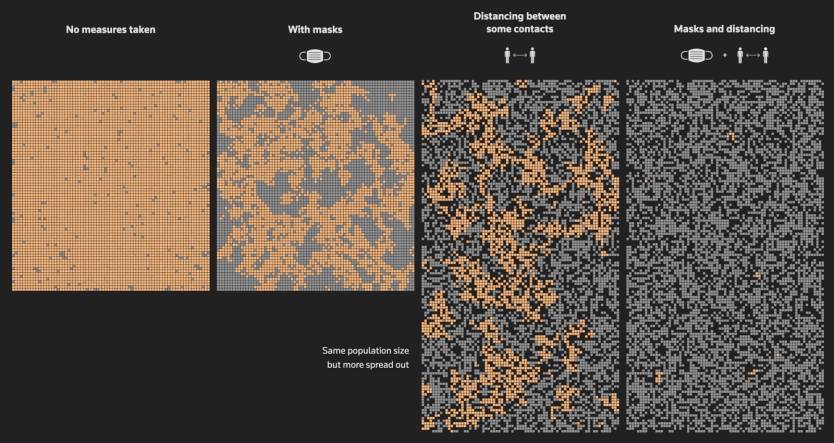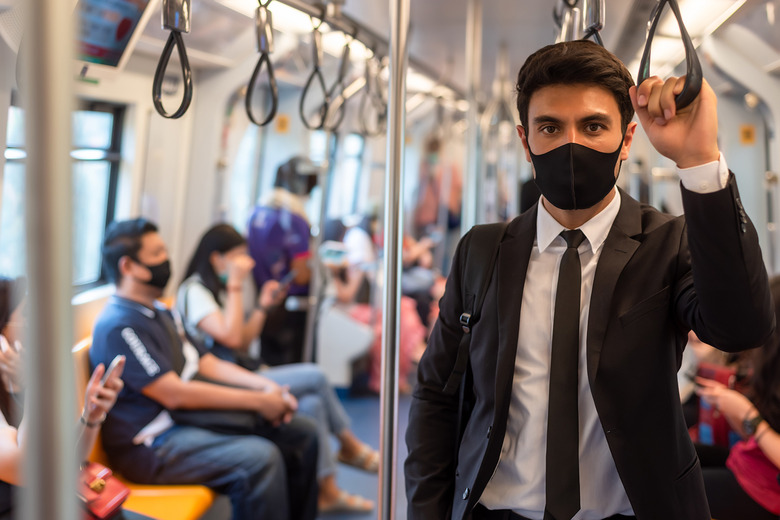This Is Exactly How We Can Stop The Coronavirus
- A new computer model shows how a coronavirus vaccine would impact the spread of COVID-19 inside a community.
- Reuters put together a model that shows herd immunity can be reached if 60% of a community is immunized against COVID-19.
- The model also shows the significant impact that face masks and social distancing can have on the spread of the virus.
After eight months of novel coronavirus pandemic, the virus is still surging in various places around the world because of a single factor. It's not the absence of highly effective drugs and vaccines — it's human behavior. People in positions of authority are failing to recognize the danger of the illness and prepare accordingly, whether it's China, the WHO, the United States, or any other country or community that made critical mistakes along the way. Other people who only have to fend for themselves and their loved ones refuse to wear face masks, fueling new surge in case numbers. Some people even think the virus doesn't even exist. Vaccines will eventually arrive and scientists are hopeful that some of the more than 150 experimental drugs will be able to prevent infections. But guess what? When that happens, people will still defy common sense and resist immunization, putting themselves and others at risk.
No matter how scary the coronavirus is or how long COVID-19 symptoms can last after the virus is gone, several countries could have dealt with their outbreaks a lot better than they did. All is not lost, however. Respecting safety guidelines can significantly reduce transmission as we wait for the Phase 3 vaccine trials to conclude. Mass vaccination campaigns could then further cut the spread once the drugs are made available. The following graphics prove these points, and you definitely need to see them.
Using available data from various studies, the Reuters Graphics department created a few beautiful illustrations that show how a vaccine would impact the spread of the virus inside communities, and how face masks combined with social distancing can keep buying us more time.
Reuters ran a simulation that includes a community of 9,000 people, with each square in the images below representing one person. Infected individuals are noted in orange, while vaccinated individuals are marked in purple. The image below is a static version of the animation, which shows the various degrees of infectivity in a community depending on the percentage of the population that is vaccinated.

Coronavirus herd immunity model from Reuters shows how vaccines can reduce the spread of COVID-19.
The more people are immunized, the lower the spread is, even if the vaccine isn't 100% effective. The Reuters model works on the assumption that the vaccine is 70% effective, meaning that 30% of the people who receive it are still susceptible to infection. Reuters ran 1,000 random simulations across each vaccination scenario and found that if 60% of people are vaccinated, that would be the sweet spot. That's what's needed for the infection rate to drop "dramatically."
The media company also modeled the COVID-19 transmission rate without vaccines, looking at various factors, including travel, social distancing, and the use of face masks. Reuters concluded, for example, that just as many people might get infected if one in four people travel or if nobody travels. The key difference is that the spread would be a lot slower in the second scenario, which would give hospitals more time to treat people.

Coronavirus herd immunity model from Reuters shows how vaccination and a pause in travel can reduce the spread of COVID-19.
Add a vaccine to that scenario and the infection rate drops significantly if 60% of the population doesn't travel and has been immunized. Even more interesting is the image above that shows COVID-19 transmission models for the current landscape. Masks and distancing can make a huge difference, keeping the transmission rate much lower in a community. Also important to note is that face masks and social distancing will be still required after vaccination. If a vaccine is 70% effective, you still have a 30% chance of getting the virus.

Coronavirus herd immunity model from Reuters shows how face masks and social distancing can reduce the spread of COVID-19.
As with any sort of study, this one has limitations as well. A model might not be able to account for all the parameters perfectly. For example, the experiment presumes that each person has the same number of contacts, but that's not the case in real life. Still, the simulations are based on the available data about COVID-19 transmission that the world has right now. They might change in the future, as researchers find out more details about this invisible killer.
What seems to be clear is that people can drive the infectivity rate down if more of them wanted to get involved actively. It's also clear that herd immunity could be reached once a vaccine is ready if enough people get it.
Reuters' full post that explains the science behind its model in great detail includes more animations, including one where you can set your own parameters when it comes to vaccination, vaccine efficacy, and infectivity rate — check it out at this link.
